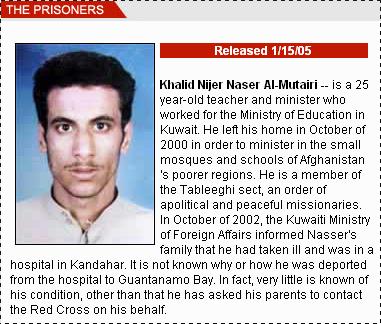In today’s Wall Street Journal:
Perhaps most ominously, KSM also admitted to being “directly in charge” of “managing and following up on the Cell for the Production of Biological Weapons, such as anthrax and others, and following up on Dirty Bomb Operations on American Soil.” Given such a confession, is it too much to ask the FBI to reconsider its dogmatic view that the 2001 anthrax attacks could only have had a domestic source?
No doubt many terror experts will declare that much or all of this is boasting, and perhaps some of it is. We can only hope so. And no doubt the truly credulous will assume it is largely a product of CIA coercion, as if the attacks KSM claims credit for had some other provenance.
But we think KSM’s world of war makes clear that, if anything, President Bush understated the danger posed by the 14 “high-value” enemy combatants he transferred to Guantanamo last autumn. And it reveals just how terribly mistaken was the view of those who told us, pre-9/11, that terrorism was merely a law enforcement threat like any other.
That view permeated the CIA, where Paul Pillar helped run the Counterterrorist Center and wrote that “There is no … BinLadentern” akin to the old Communist Comintern. He denounced “overheated rhetoric that has spun out ever more frightening and unusual ways in which terrorism might inflict large numbers of casualties.” And he deprecated President Clinton for ordering government agencies to examine the plausibility of a biological attack on New York City after he’d read “The Cobra Event,” Richard Preston’s 1998 novel on the subject.
When the 9/11 Commission concluded that the failure to avert that awful day was above all “a failure of imagination,” the Pillar world view is Exhibit A. And we mention it here because now, after five years without a terror attack on U.S. soil, that view is making a comeback in the growing opposition to holding enemy combatants in Guantanamo or to warrantless wiretaps of al Qaeda.


